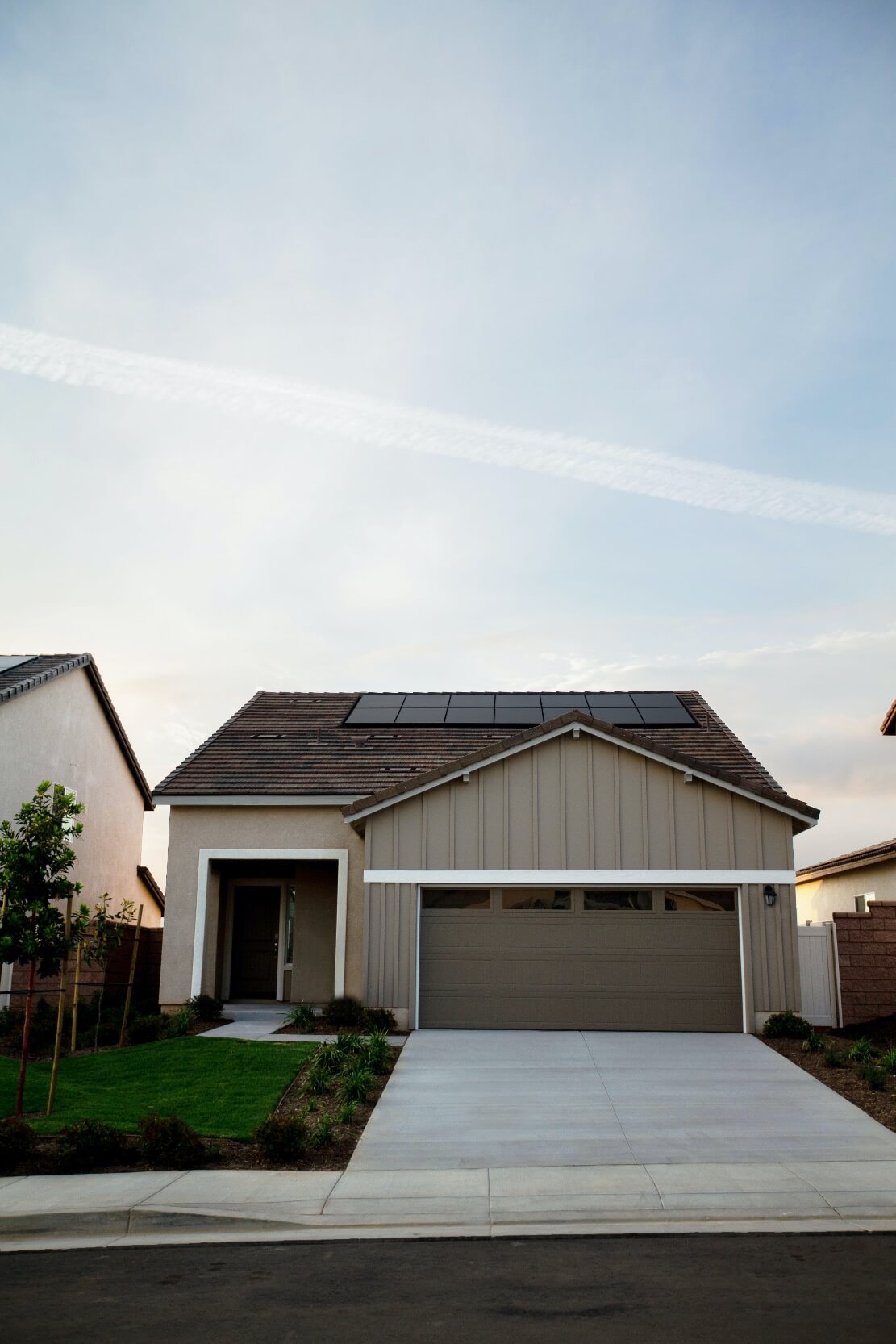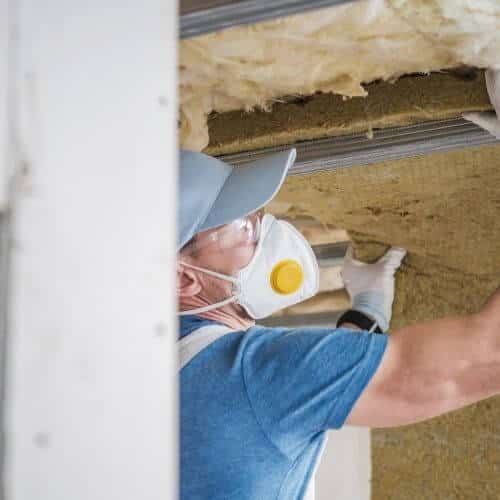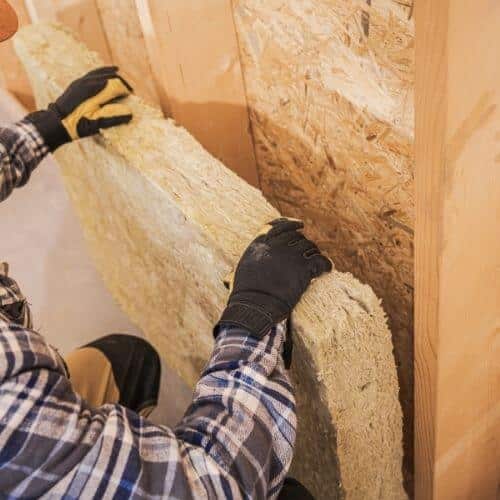Floods can cause significant damage to a garage. It can affect everything from the structure to stored items. It is important to plan for a systematic approach when dealing with a flood-damaged garage.
How to Clean Your Garage After a Flood

- Contain and remove the water.
- Remove furniture.
- Remove mud.
- Disinfect floors.
- Ventilate the garage.
- Check the electricity.
Step #1: Contain and Remove the Water
First, you must stop the water from spreading further. A flood dam plays a crucial role in this. Flood dams, made from absorbent or impermeable materials, help contain the water in one area. It prevents water from reaching other parts of your home or garage.
Follow these steps after you’ve contained the water:
Watch Out for Possible Electrical Hazards
Before you start the cleanup, make sure to turn off the electricity to your garage at the main breaker. If you’re unsure or can’t safely reach the breaker, call a professional. Also, avoid standing in water when operating switches or unplugging devices.
Use a Wet-Dry Vacuum for Water Removal
Unlike regular vacuums, wet-dry vacuums are designed to handle water. They can quickly suck up water and reduce standing water. Remember to empty the vacuum regularly and use it only in areas where it’s safe from electrical hazards.
Act Fast
The longer water sits in your garage, the more damage it can cause. Immediate action helps prevent the development of mold and mildew, reduces the risk of structural damage, and salvages items that might otherwise be lost. Quick drying can also prevent lingering odors and additional complications.
Step #2: Remove Furniture
Furniture made from porous materials like wood, fabric, and upholstery is particularly vulnerable after a flood. These materials can absorb water quickly and become breeding grounds for mold and mildew if not addressed promptly.
Inspect each piece of furniture closely. If you spot signs of water damage or mold, consider the safety and health implications. Sometimes, attempting to salvage these items isn’t worth the risk they pose.
Proper Disposal of Water-Damaged Furniture
Water-damaged furniture, especially those infiltrated by mold, needs proper disposal. Depending on local regulations, this might mean taking it to a designated disposal area or arranging for special waste collection. Be sure to wear protective gear like gloves and masks when handling mold-infested items to avoid inhaling spores.
Sunlight and Ventilation for Drying
If the weather permits, move wet items outside where sunlight and fresh air can help in the drying process. Sunlight is a natural disinfectant, helping to kill mold and bacteria, while good ventilation speeds up drying and reduces the damp, musty smells.
If taking furniture outside isn’t an option, use fans and dehumidifiers indoors to circulate air and remove moisture. Remember, thorough drying may take several days, so be patient to ensure all moisture is gone.
Step #3: Remove Mud
After a flood, it’s common to find your garage floor covered in mud. This mud can contain contaminants like bacteria and chemicals brought in by the floodwater.
Start by shoveling out as much mud as you can. Be thorough but also gentle to avoid damaging the garage floor. Removing the bulk of the mud makes the following cleaning steps more manageable and effective.
Step #4: Disinfect The Floor
Floodwaters often carry germs and contaminants that can linger even after the water and mud are gone. Proper disinfection helps eliminate these health hazards. Furthermore, you can hire fast cleaning services to make your life easier.
- Mop with Warm Water and Soap
Start the disinfection process with a simple solution of warm water and soap. Mop the floors thoroughly with this mixture to remove any residual grime and dirt.
- Use a Chlorine Bleach Solution for Mold Prevention
For deeper disinfection, mix about one cup of bleach with one gallon of water. Apply this solution generously on the floors. Pay special attention to corners and crevices where mold is likely to grow.
- Safeguard Other Affected Items
Don’t forget about other items and surfaces in your garage that may have been affected by the flood. Walls, tools, and even smaller items should be cleaned and disinfected. Non-porous items can generally be cleaned with the same bleach solution used on the floors, but always check the suitability of your cleaning materials for each specific item to avoid damage.
Step #5: Ventilate the Garage
Good airflow is essential in removing lingering moisture, which can be trapped in the floors, walls, and even the air after a flood. Opening windows and doors allows fresh air to circulate and helps in drying out the garage more quickly.
To enhance the drying process, use fans strategically placed around the garage. Positioning fans near open doors or windows can help draw fresh air in and push damp air out. If you have access to a dehumidifier, use it to extract moisture from the air.
Mold thrives in moist, stagnant environments, so keeping the air moving and dry is crucial. Additionally, good ventilation helps disperse any musty smells that are common after flooding.
Step #6: Check the Electricity
If you’ve experienced significant flooding, consider having an electrician inspect and potentially upgrade your garage’s electrical system to make it more flood-resistant. This might include raising outlets, using a different type of wiring, or installing a ground fault circuit interrupter (GFCI) for added safety.
FAQs
How Long Does It Take for Concrete to Dry After a Flood?
Generally, it can take between 24 hours to several weeks. Proper ventilation and the use of dehumidifiers or fans can speed up the drying process.
What Happens When Water Sits on Concrete?
When water sits on concrete for an extended period, it can lead to various issues, including:
- Efflorescence: The emergence of white, powdery deposits as water evaporates from the concrete surface.
- Mold and Mildew Growth: Excess moisture can encourage the growth of mold and mildew, which leads to health hazards and unpleasant odors.
- Structural Damage: Prolonged water exposure can weaken concrete, which can cause cracks, pitting, or crumbling.
Can I Cover Wet Concrete with Dirt?
It’s not advisable to cover wet concrete with dirt. The dirt can trap moisture, slow down the drying process, and increase the risk of mold and structural damage. It’s best to allow the concrete to dry completely through natural evaporation and assisted ventilation before covering or applying any new material.
Related: How To Run Plumbing To Detached Garage
Conclusion
Acting promptly and systematically prevents immediate damage and long-term issues like mold, electrical hazards, and structural weaknesses. These are the same steps you must follow when doing a flood-damaged garage cleanout.
Remember, while DIY steps are effective for immediate response, don’t hesitate to contact professionals for comprehensive services, especially when dealing with more severe flood impacts.
By taking these steps, you ensure a secure, well-maintained garage ready to withstand whatever nature throws its way.
Read Next: Garage Insulation Costs

Michael Davis is a heating & plumbing expert who currently works as independent contractor in SC. He also writes for Plumbertip.
For almost 10 years he worked on various plumbing tasks across South Carolina.


